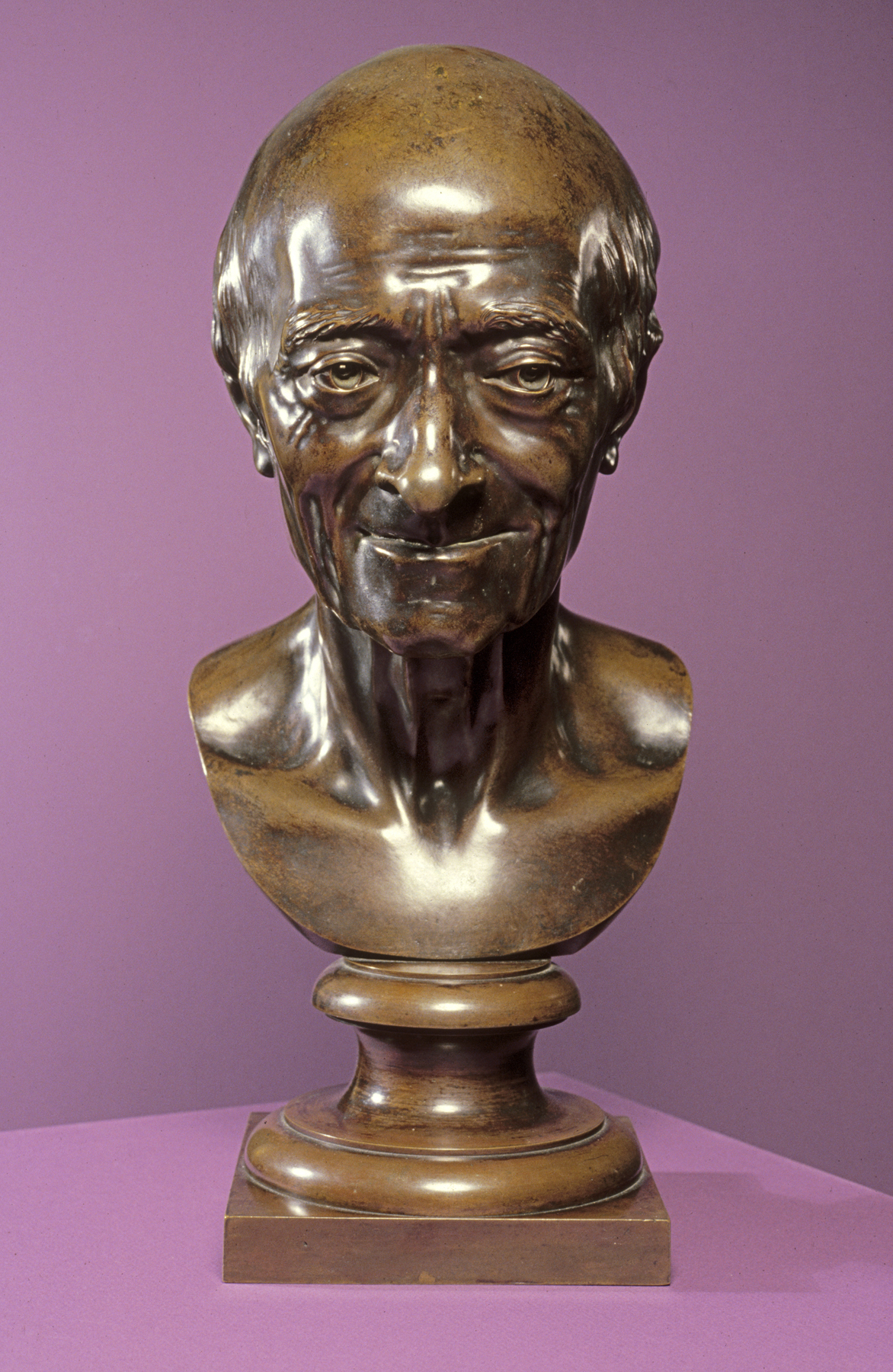Head of Voltaire
(18th and 19th Centuries )
In March 1778, just two months before his death, the famed philosopher Voltaire agreed to sit for Houdon. The resulting bust, showing the great philosopher in the antique style, without a wig or any other costume, was considered to be so true to life that people flocked to the sculptor's studio to marvel at the likeness. Houdon was particularly praised for his ability to give the eyes a lively quality by manipulating light and shadow in the deep carving of the pupils. This exceptionally fine bronze version of the marble original, now preserved in the Musée des Beaux-Arts in Angers, France, is one of many such casts produced either with or without the master's authorization. Their mass production attests to the popularity of Houdon's original.
Provenance
Provenance (from the French provenir, 'to come from/forth') is the chronology of the ownership, custody, or location of a historical object. Learn more about provenance at the Walters.
Henry Walters, Baltimore [date and mode of acquisition unknown]; Walters Art Museum, 1931, by bequest.
Exhibitions
| 2002-2004 | A Magnificent Age: Masterpieces from the Walters Art Museum, Baltimore. The Walters Art Museum, Baltimore; The Nelson-Atkins Museum of Art, Kansas City; Mint Museum of Art, Charlotte. |
| 1999-2000 | Vive la France! French Treasures from the Middle Ages to Monet. The Walters Art Gallery, Baltimore. |
| 1995 | The Allure of Bronze. The Walters Art Gallery, Baltimore. |
Geographies
France (Place of Origin)
Measurements
17 11/16 in. (45 cm)
Credit Line
Acquired by Henry Walters
Location in Museum
Not on view
Accession Number
In libraries, galleries, museums, and archives, an accession number is a unique identifier assigned to each object in the collection.
In libraries, galleries, museums, and archives, an accession number is a unique identifier assigned to each object in the collection.
27.408


